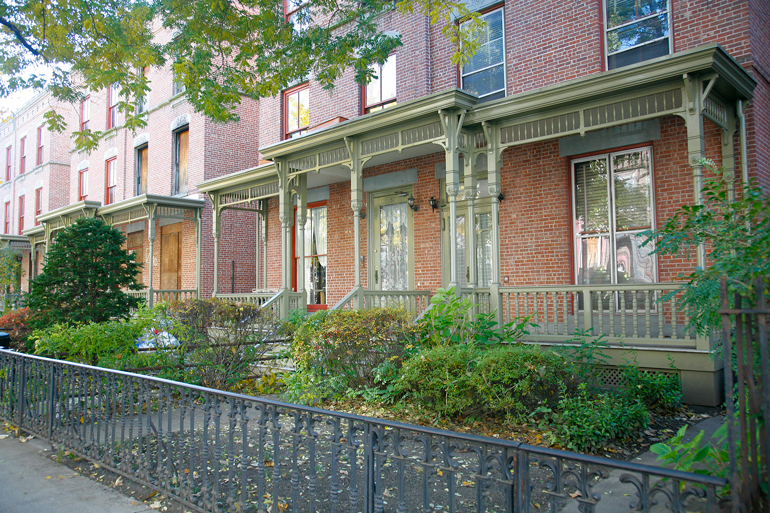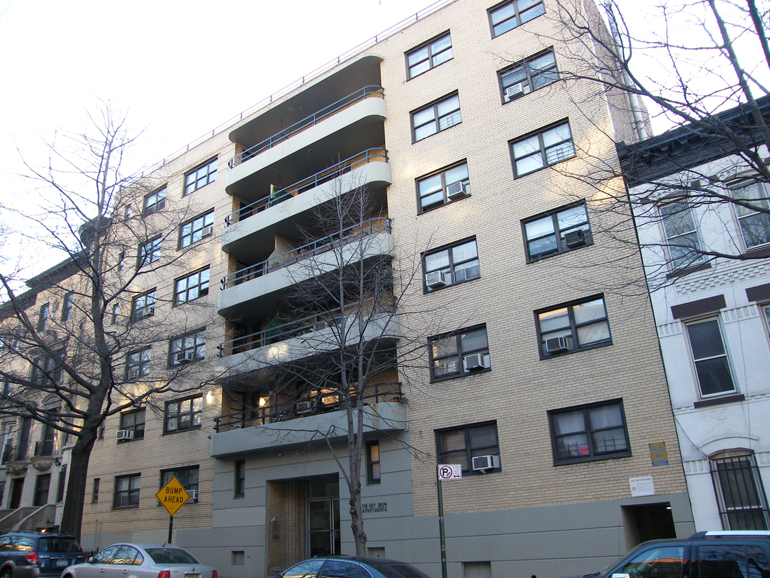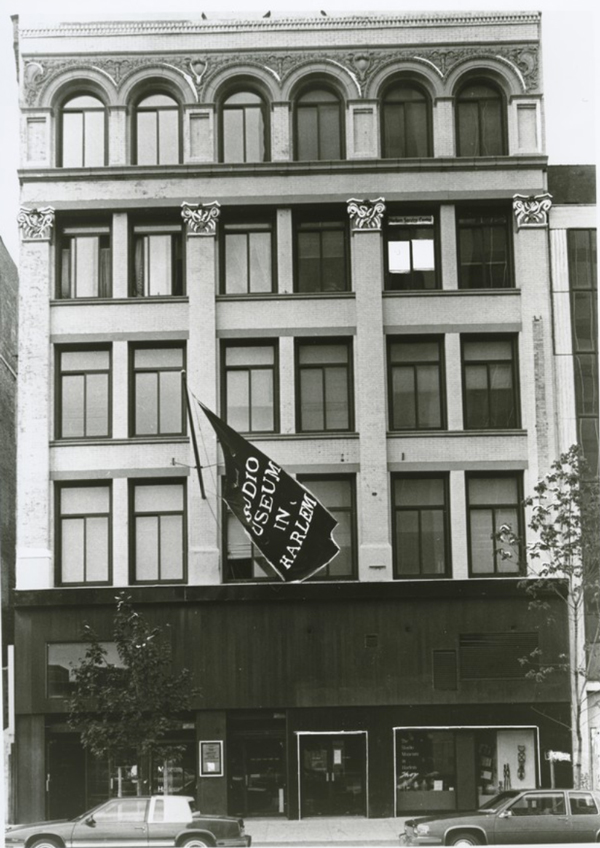
We are celebrating 15 years — and counting — of stories that are deeply researched and deeply felt, that build a historical record of what the city has been.
We are celebrating 15 years — and counting — of stories that are deeply researched and deeply felt, that build a historical record of what the city has been.
Across the world of architecture and design, professionals, students, and teachers are reckoning with the discipline’s long-standing resistance to seeing race — from the lack of diversity within its ranks, to how the built environment impacts communities of color. There is much work to be done. An initiative of students and the library at the Harvard Graduate School of Design, the African American Design Nexus is an expanding and accessible reference, where aspiring architects can see themselves and their future practice in the work of Black designers. Building on this archive of individuals and projects, Thandi Nyambose delves into the impact of Black architects and urbanists on place. We’ve asked before who makes Harlem, a neighborhood whose centrality to African-American identity and culture remains a constant, while its population and physical structures see rapid change. Here, in an adaptation of her new StoryMap of the neighborhood, Nyambose surveys some of the places where Black designers have made space for domesticity, creativity, and community, and built a Harlem of bricks and of the imagination.
It is widely accepted that the design industries have a problem with representation. About two percent of all 116,242 licensed architects are Black, and approximately 0.4 percent are Black women. Black architects who do break into the industry are hardly household names: from Percy Ifill and Conrad Johnson, who designed what was once the tallest building in Harlem, to Roberta Washington, who led the restoration of an entire block of historic row houses there. Why are these trailblazing architects so obscured? As an urban planning student, I can attest to having to acclimate to a profession that is presented as almost exclusively white.
In response to this issue, students at Harvard’s Graduate School of Design launched the African American Design Nexus in 2019 to establish a digital archive of work by Black designers. When I joined the Nexus’ efforts last summer, they were largely focused on highlighting people and projects: carefully compiling the addresses for thousands of sites throughout the United States, alongside the names of firms and individuals who designed them. Upon receiving access to this information, I set out to foreground a third category — place — through a new, geospatial method of presenting the stories behind the data.
What urban landscape is more synonymous with Black American culture than Harlem, a neighborhood of under one-and-a-half square miles that sparks excitement, optimism, and pride in Black people the world over? Having lived near the neighborhood for years, I was familiar with the multilayered histories of race and place embedded in the urban grid. To borrow from June Jordan’s “ecosocial” interpretation of space, which considers the built environment to be a manifestation of human ecology, the architecture of Harlem felt to me like an organic extension of the Black experience in New York. I took inventory of the Nexus’ extensive back-end database and began to add to it, poring through images, articles, and anecdotes of every documented Black-designed space standing in Harlem.
In uncovering the history of these eleven Black-designed places, it became clear that each one embodied a critical aspect of Harlem’s visual and cultural identity. Tandy & Foster’s neo-Gothic churches hosted community and social services. John Louis Wilson’s Harlem River Houses were the first government-funded housing complex in New York City. Max Bond’s adaptations housed two of the city’s most celebrated repositories of Black achievement.
Harlem has long been a testing ground for architectural and urban strategies, including the slum clearance of urban renewal, high-rise public housing, widespread up-zoning, and even Afro-futurism. More often than not, the outcomes of these interventions devalued Black residents and systemically excluded them from the city’s decision-making processes. The neighborhood has seen (and continues to see) many cycles of economic upheaval, creative output, shifting cultural landscapes, and struggles over the right to the city. This concept is of particular concern today: unprecedented inequity and gentrification, along the 125th Street corridor in particular, have transformed local demographics, erasing buildings, individuals, and even entire communities.
This survey seeks to account for a historical disregard for Black design, and for the accelerating threats to uptown’s Black community. It highlights the undeniable linkages between Black professionals and the power of the built environment to provide shelter, foster creativity, and elicit joy and community. By situating Black designers at the center of its narrative, the project effectively memorializes and elevates their work as sites of urban renaissance. In doing so, the archive may inform a next generation of Black designers: agents of change who will inherit these constructed environments and radically materialize alternative ones. How might they imagine the Harlems of the future?
Pan through, zoom in and out, and locate the pink buildings on the map above to view information on some of Harlem’s Black-designed places.
Click the census tracts on the map above to see the Black population of Harlem compared to total population in 2010.
By 1904, nearly all of the remaining undeveloped land in Harlem had been built upon, but a combination of inflation and property vacancies led to a real estate crash. Seeing an opening for development, especially as older ethnic communities began to emigrate from the area, Black real estate entrepreneurs led by Philip Payton Jr. began to bring black tenants into vacant Harlem properties.
In 1910, census records show Central Harlem as being 10% Black; by 1930, this population share would increase to more than 70%. The NAACP’s Harlem chapter, which would later become the largest in the country, began operating in 1910. The first branch of Marcus Garvey’s Universal Negro Improvement Association followed suit in 1917.
Two of Harlem’s most famous churches were designed by trailblazing Black architects in the early 1900s. These church congregations actively organized for civil rights and continue to provide an array of social services to Harlem.
The oldest Black Episcopal parish in the city, St. Philip’s Church was attended by the likes of Thurgood Marshall and W.E.B. Du Bois. The brick building was designed in the neo-Gothic style under the direction of the first licensed African American architect in New York: Vertner Woodson Tandy from Lexington, Kentucky.
Tandy opened an office on Broadway with his partner George Washington Foster, another pioneering Black architect. Their firm, Tandy & Foster, was soon sought after by clients across the state, particularly in Harlem.
Foster went on to design another of Harlem’s neo-Gothic churches, the Mother African Methodist Episcopal Zion Church. Like St. Philip’s, this space’s value as a cultural center transcends its congregation to service the city’s Black community more generally. As a center of activism, the church organized for civil rights and continues to sponsor dance programs, concerts, educational enrichment, and homeless services.
In 1920, The New York Times ran a story about Harlem’s Astor Row, warning of “radical changes” ahead for the once-exclusively white enclave. During this period, Astor Row became a magnet for African-Americans migrating to Harlem. The 28 three-story houses along West 130th Street are distinguished by their covered wooden porches, which can be interpreted as an iconic architectural feature of Black gathering spaces.
The block’s eventual decay was a result of the overcrowding and poverty wrought by the Depression and disinvestment. Although the homes were designated as city landmarks in 1981, by 1990, most of the porches were gone or in serious disrepair. Roberta Washington — one of the few Black woman architects based in Harlem — was the architect behind the iconic porches’ restoration in the 1990s. Their revival attests to the resilience of Harlem’s Black community. Astor Row, once again a “Front-Porch Block,” is sought after by a new demographic of Harlem residents.
New York City began experimenting with public housing in the 1930s, seeking to improve shoddy living conditions for poor residents. The Harlem River Houses was the first government-funded complex in New York City, and has been designated a historic landmark.
The development is seen as setting a standard in federally subsidized housing. It has been described as a “remarkably gentle oasis.” The low-rise, five-story design and enclosed plazas were the work of John Louis Wilson, Jr, the first African-American graduate of Columbia University’s architecture school in 1928. Following this project, Wilson worked for NYC’s Parks Department until 1960 while also running his own practice.
Another project designed by the prolific Vertner Tandy, the Ivey Delph Apartment building still has its original facade. The six-story building with central, curving balconies was one of the first large-scale projects by and for African Americans in New York City, backed by a Federal Housing Administration mortgage commitment. It was added to the National Register of Historic Places in 2005.
The homes are named after Dr. Walter Ivey Delph, a Harlem physician and real estate investor who was concerned that poor housing environments produced poor health outcomes for Black people. Delph developed the apartments as a healthy living option, and they attracted notable Harlem residents, including dancer Marilyn Keets and Ted Sturgis, a bass player who performed with Louis Armstrong.
In the tumultuous decades to come, cycles of high rent, low employment, poor maintenance of building stock, and lack of public investment would plunge Harlem into economic and demographic crisis. In the late 1960s the Black Panther Party established their New York headquarters in Harlem, leading public demonstrations and creating social programs.
In 1966, New York Governor Nelson Rockefeller sought to establish a greater government presence in Harlem by building a state office building. Rockefeller eventually enlisted the Black architecture firm Ifill Johnson Hanchard, run by Harlem childhood friends Percy Ifill and Conrad Johnson, to design the building.
Ifill Johnson Hanchard released plans for a tower, set back from a public plaza on 125th Street. The plan received criticism from residents who wanted any new development to be community oriented, and to include low-income housing, a cultural center and a school. Protesters staged a three-month “squat-in” on the site of the proposed office building. Ignoring this opposition, Rockefeller proceeded with the plan.
In 1973, the nineteen-story, brutalist Harlem State Office Building opened: the tallest building in Harlem. It was renamed the Adam Clayton Powell Jr. Building in 1983, after the first African-American member of the House of Representatives from New York.
Born in Kentucky, James Max Bond, Jr. was one of New York’s most prominent Black architects. He was educated at Harvard Graduate School of Design, graduating in 1958. His firm, Bond Ryder & Associates, which later became Davis Brody Bond, worked on buildings for two iconic Harlem institutions known for their celebration of Black art and cultural archives: the Schomburg Center and the Studio Museum.
Bond Ryder & Associates led the renovation and additions to the Schomburg Center, one of the world’s leading cultural institutions dedicated to the Black diaspora. Located at Harlem’s historic crossroads — 135th Street and Malcolm X Boulevard — the “vigorously geometrical brick exterior responds to the neighborhood context and nods to the high proportion of masons among African-American construction workers” according to Davis Brody Bond. The Center’s interior uses West African Sapele wood for paneling and shelves, and features stacked octagonal drums that recall southern African house forms.
Perhaps Bond Ryder & Associates’ best-known work in New York is the renovation of a historic commercial structure for Harlem’s Studio Museum, a fixture of Black art. In the late 1970s, the New York Bank for Savings gifted the building to the museum, and Bond led the redesign, adapting the six-story building into exhibition spaces with offices. It reopened in 1981.
Focusing on artists of African descent, the museum’s artist-in-residence program has supported figures such as Kerry James Marshall. Current director Thelma Golden shared in 2015 that the institution had “outgrown the physical limitations of this space.” Plans for a new, custom-built facility by David Adjaye are underway.
While rampant commercial development in the 21st century has revitalized parts of Harlem, especially the 125th Street corridor, little investment in schools, lack of job prospects for locals, and the deterioration of Harlem’s rich cultural capital have left many in the community disempowered. The following three places may be understood as efforts to respond to Harlem’s disenfranchisement through design.
The Heritage Health and Housing Headquarters is home to a social service non-profit providing healthcare, housing and other support. They aim to enhance community as well as social and economic empowerment in Harlem.
The building was designed by boutique firm Caples Jefferson, founded 1987 by Sara Caples and Everado Jefferson, a Black Panamanian architect. Both architects received a Master of Architecture from Yale University in 1974 and 1973, respectively, before founding their firm.
The facade features a mosaic by Israeli-born artist Nathan Slate Joseph. Journalist Tracie Rozhon writes, “The facade . . . combines modernism and Caribbean influences. The one-story building, at 201 West 127th Street, is known as ‘the patchwork building’ because of its painted metal patches. The interior, by contrast, is cleanly modernist with crisp white tiles and corrugated plastic panels.”
Roberta Washington’s 1400 Fifth Avenue has been described by the architect as the “first green building” in Harlem. Washington received her Master of Architecture at Columbia University and is a LEED Accredited Professional. She also served as co-chair of the Land-Use Committee for Central Harlem’s Community Planning Board for six years.
The condominiums utilize geothermal heating and cooling, and more than 60 percent of the structure is made up of recyclable or renewable materials. The designs of the lobby, the railings, and exterior light fixtures all feature West African motifs. In addition to affordable and market-rate housing, the eight-story building’s first floor is dedicated to commercial use.
Critically acclaimed British-Ghanaian architect David Adjaye designed the modern, mixed-use Sugar Hill building, home to 124 affordable housing units, the Children’s Museum of Art and Storytelling, and a childcare center. Adjaye, who lives with his family on Harlem’s 119th Street, remarked, “My hope is that the building . . . will offer a symbol of civic pride and be a valued new resource for the neighborhood.”
The Studio Museum in Harlem is replacing its current building with a five-story, custom-built space intended to serve as a hub for a “rapidly changing neighborhood.”
In designing the site, David Adjaye was inspired by the surrounding Harlem vernacular, including the detailed window framing of brownstone homes coupled with the airy volume of the neighborhood’s churches. He shares, “I wanted to honor this idea of public rooms, which are soaring, celebratory and edifying—uplifting […] between the residential and the civic, we learned the lessons of public realms and tried to bring those two together”
The built environment of Harlem has fostered protest, arts, education, and the general celebration of Black life. Now, rampant gentrification poses a threat to residents. As this beacon of culture faces a more uncertain future than ever, it is important to interrogate the rich legacies of the Black-designed places documented here. In the face of pervasive barriers to professional Black urbanists, the visionary works of Black planners, designers, and architects remain critical to Harlem’s changing mosaic.
The views expressed here are those of the authors only and do not reflect the position of The Architectural League of New York.







Comments